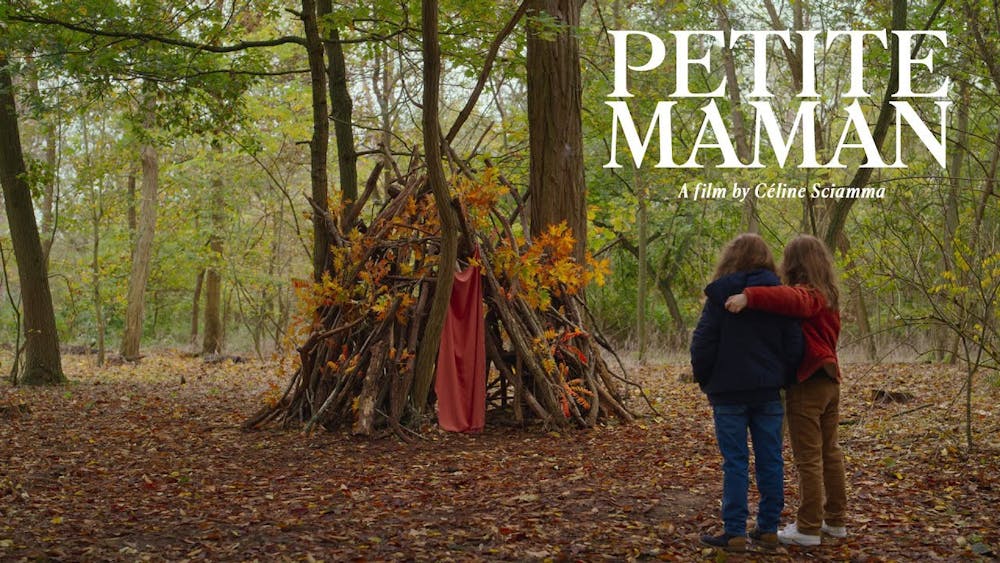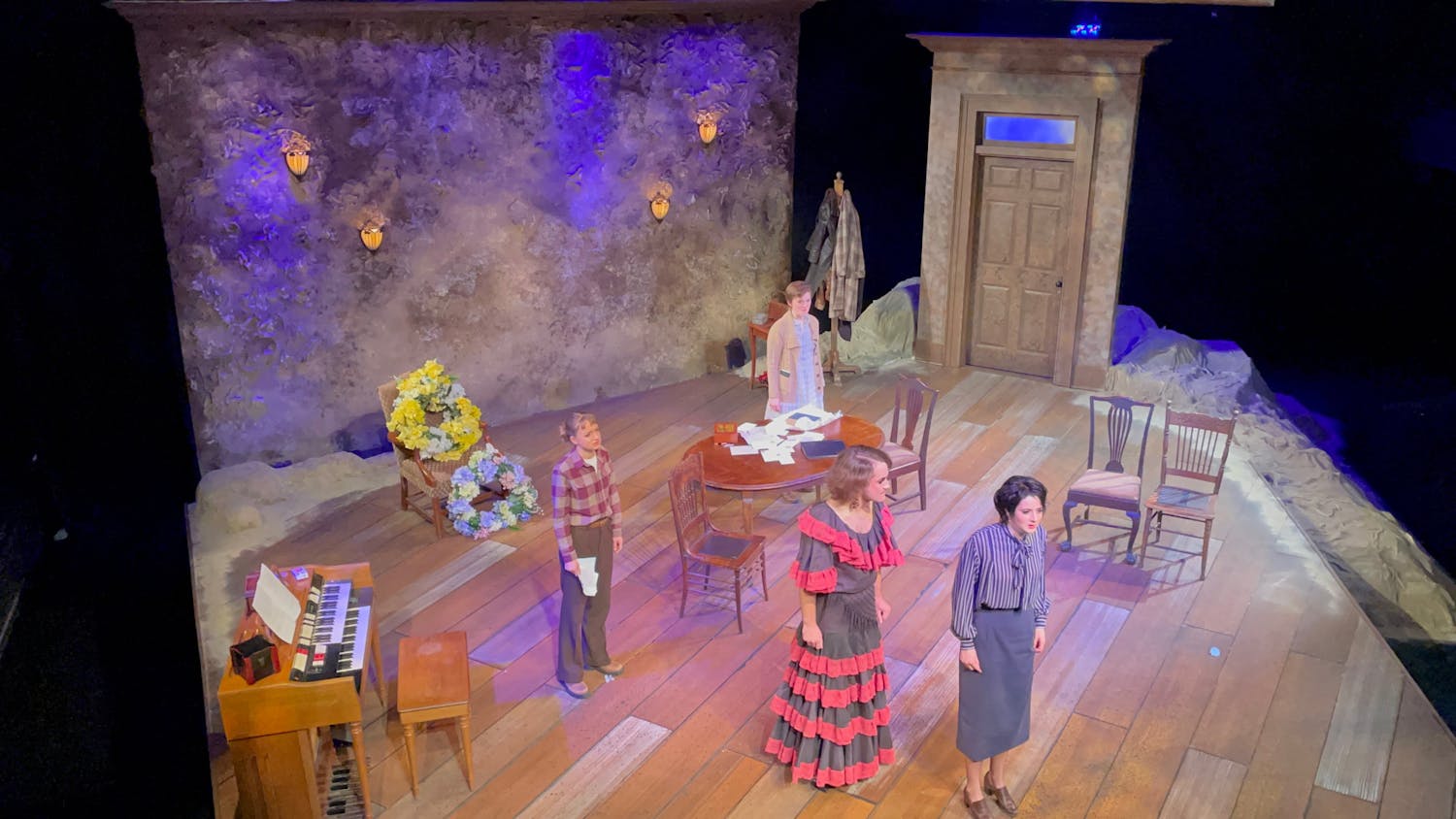“Petite Maman,” the latest movie in the Hirschfield International Film Series, uses a minimalist approach to tell a poignant story of family and friendship bound through loss and love. The film opens in a nursing home, with the camera following closely behind a child as she says goodbye to each resident of the building. The viewer follows her until she finally enters an empty room and approaches a young woman, her mother, taking down the family’s personal effects from the room. The girl then sits on the empty hospital bed, unable to say goodbye to this last person.
The film uses simple scenes with minimal dialogue to tell the story of Nelly (Josephine Sanz), an 8-year-old girl who just lost her grandmother, as she copes with her first feelings of grief. The family packs up the grandmother’s home which is visually portrayed through a combination of striking domestic images: a still unpainted patch of patterned wallpaper behind the kitchen cabinets, a secret closet hidden in the wall and a long, dimly-lit corridor.
In the woods, Nelly meets Marion (Gabrielle Sanz), who bears a remarkable resemblance to her, building a hut, and the two instantly become friends. When Marion invites Nelly inside her home, viewers begin to piece together the overarching structural device of the film. “Petite Maman” juxtaposes scenes of Marion’s and Nelly’s identical homes, signaling to the viewer that Nelly has met her mother at the childhood stage of her life. Marion soon undergoes an unspecified operation identical to the one Nelly’s mother went through during childhood, giving Nelly the opportunity to meet Marion’s mother, her grandmother as a younger woman, again. In a touching scene of familial love, Marion’s mother ties Nelly’s tie, and the two attempt a crossword puzzle together, reminiscent of the film’s opening scene in the nursing home. Through this familial connection, Nelly is able to fully say a heartfelt goodbye to her grandmother in a way that offers closure.
The film’s focus on the seemingly mundane gives it a brilliant touch. Inside Marion’s home, the kitchen wallpaper is identical to the unpainted remnants left behind in Nelly’s grandmother’s home. In silence, Nelly explores the corridor with a secret closet just like hers at home.
The film explores the unquestioning nature of children, even when faced with the bizarre. At the sudden realization that Marion is her mother, only as a child, Nelly relays this information to Marion, who displays the utmost confidence in her words. Viewers are encouraged to believe the possibility that Marion and Nelly are tied in a way that breaks realistic notions of time. The film’s minimalistic style leaves much for the viewer to infer. The audience must trust that Marion and Nelly’s mother are one, urging viewers towards their childhood roots of blind faith.
The film’s brilliance comes from the fact that audiences view the world through the lens of a child, with the camera almost always at the level of her eyesight. Nelly’s lack of overthinking gives the film an air of innocence that befits a story of childhood experiences. The loss of a loved one seen through the eyes of a child is juxtaposed with accompanying heavy feelings of grief by her mother and father. Intimate, silent family moments are intertwined with vibrant scenes in the rustling woods as Nelly and Marion build a hut out of fallen trees. As children do, Nelly bounces from one moment to the next, deeply aware yet not outwardly noticeable. There are moments in the film, however, when the levity of the situation intensifies Nelly’s emotions to an extreme, causing a childlike reaction. When Nelly realizes Marion’s true identity, she runs out of the house immediately and back to her home, suddenly intensely aware of the emotional gravity of the situation.
Despite its short runtime, “Petite Maman” tells a thorough, character-driven story that is beautifully easy to absorb as an audience member. The alluring scenes in the woods full of orange- and yellow-tinted leaves and the magnificent beauty of the lake are effortlessly consumed by viewers, eliciting reactions of childlike wonder and an urge to explore nature.
“Petite Maman” closes out with Nelly and her adult mom on the bare kitchen floor, all items in the home seemingly packed away. With little space between them, the emotional tenderness and love between the two is amplified, leaving viewers with a sense of nostalgia for the familiarity of close relationships. While uncertainty about the future is difficult to grapple with, the film illustrates that the fear associated with this uncertainty can and should be eliminated, urging viewers to find contentment and beauty in unpredictability itself.

Emily Hogan '24 (she/her) is a Local Editor.
She is studying Environmental Policy with a minor in Math. In addition to writing and editing for the Campus, she also dances with the On Tap dance troupe and serves on the Environmental Council. She has previously worked with the Sustainability Solutions Lab at Middlebury.




